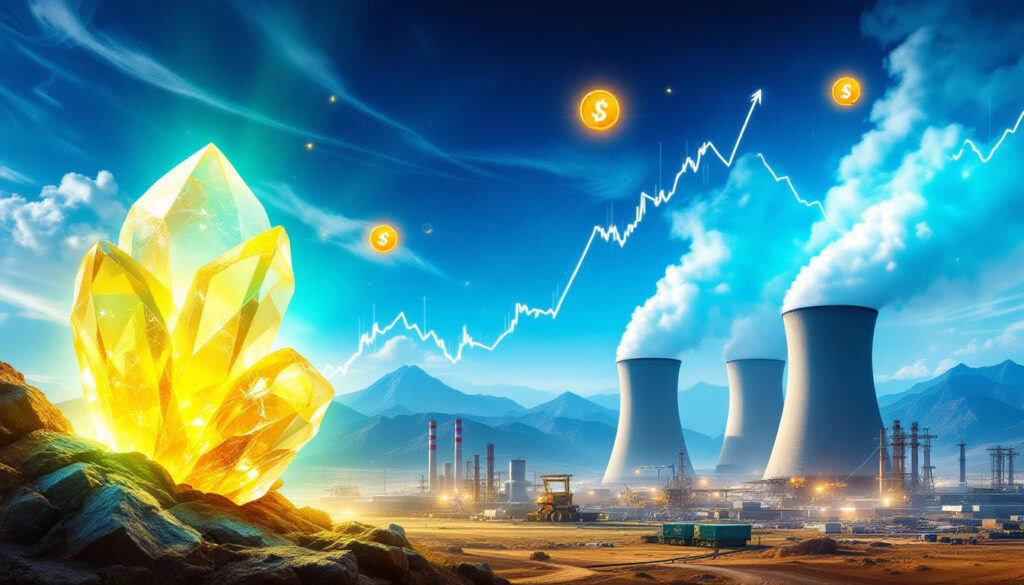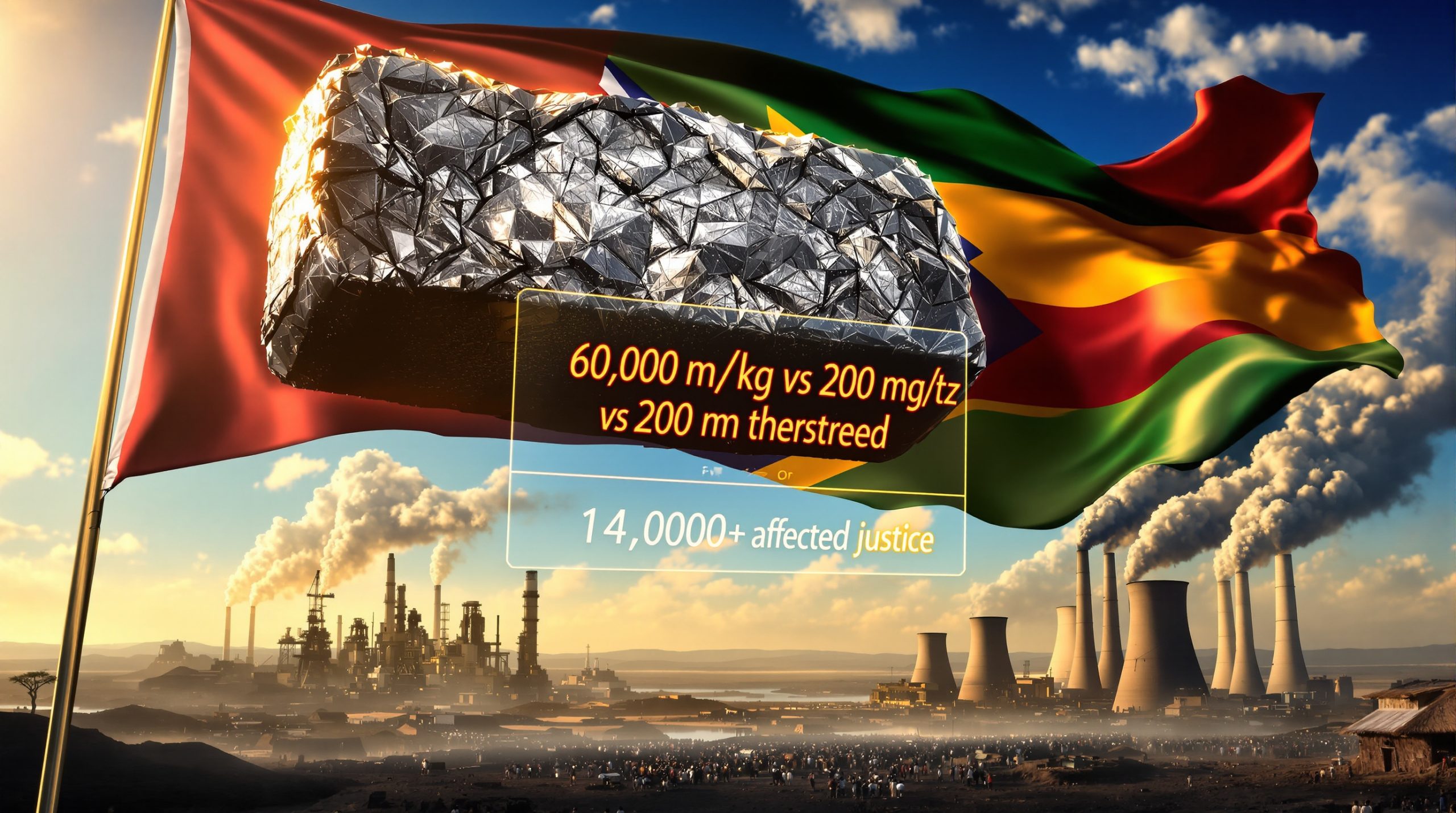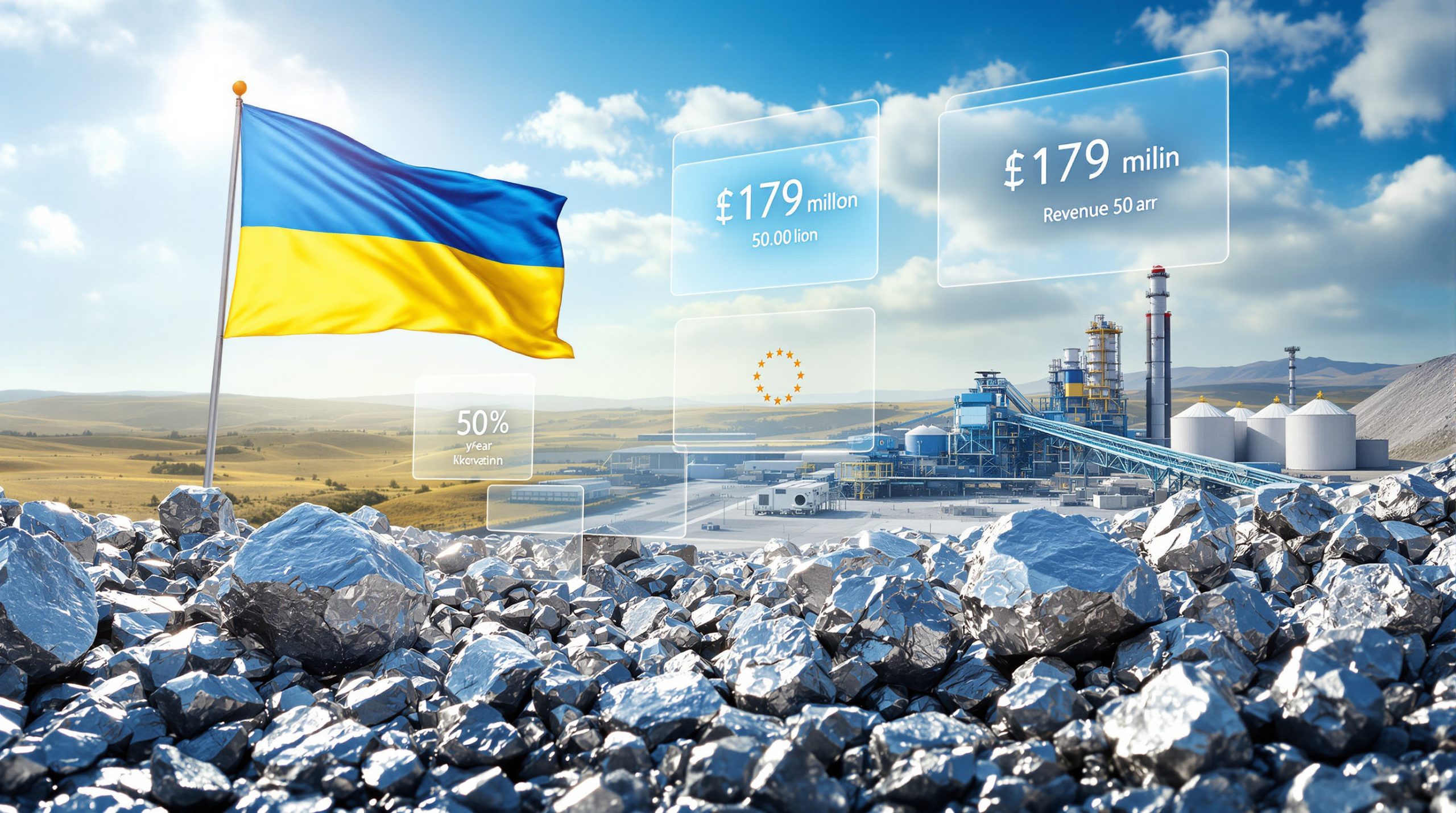Understanding the Current Uranium Market Dynamics
What's Happening with Uranium Prices?
The uranium spot market has weakened to approximately $65/lb, down from a 2023 average of $85/lb, driven by financial traders and hedge funds accounting for over 90% of transactions. In contrast, the term contract price has held steady at $80/lb for over a year, reflecting producers' insistence on pricing that supports sustainable operations.
This divergence stems from structural mismatches: the spot market's low liquidity (11 million pounds transacted in Q1 2024) contrasts with utilities' long-term procurement needs. Financial players exploit this through "carry trades," purchasing spot uranium at $65/lb and committing to future deliveries at $70/lb escalated annually, bypassing traditional term contracts.
Key Market Challenges in 2024
Uncertainty dominates the market, with a U.S. Section 232 investigation into critical minerals (including uranium) pending until October 2024 and potential tariffs under the Trump administration. Utilities are delaying term contracting due to geopolitical uranium dynamics, such as Kazakhstan's shift to 90-10 state-owned ventures and Russia's potential re-entry into Western markets post-Ukraine.
Production shortfalls of 3.5 million pounds in 2023 from restart projects like MacArthur and Langer Heinrich exacerbate supply concerns, creating a market where short-term trading strategies overshadow long-term security of supply considerations.
The Uranium Supply Chain Crisis
Current Production Realities vs. Expectations
U.S. uranium production remains minimal at 1–2 million pounds annually against demand of 50 million pounds, with restart projects facing cost overruns of 45%. The International Atomic Energy Agency's (IAEA) 2021 Red Book projections overestimated actual output, highlighting systemic optimism bias in production forecasts.
Skilled labor shortages further delay timelines, particularly for in-situ recovery (ISR) operations in the U.S., where specialized knowledge in wellfield operations and processing chemistry has eroded during the industry's downturn. The technical complexities of uranium extraction, combined with regulatory hurdles, have created significant barriers to ramping up production quickly.
The Critical Greenfield Project Timeline
Only a handful of greenfield projects, such as NexGen's Rook I and Cameco's Phoenix, could feasibly begin production by 2030–2031, requiring capital investments exceeding $2 billion. These projects demand a minimum term price of $80/lb to secure financing, yet permitting delays and inflationary pressures threaten viability.
For example, the Cigar Lake/Lotus project, slated for Q3 2024, has struggled to finalize contracts despite looming supply gaps. The industry faces a critical window for investment decisions, as new mines typically require 7-10 years from discovery to production, creating an immovable timeline that clashes with utilities' wait-and-see approach.
Conversion and Enrichment Bottlenecks
Western conversion capacity remains stagnant until at least 2030, with the UK's Springfield facility (5,000-ton capacity) delayed to 2030–2031. Enrichment prices have doubled from $60–65/SWU to $130–150/SWU, driven by reliance on Russia's Rosatom and limited expansion at Urenco.
Utilities are reluctantly accepting higher costs, recognizing enrichment as a critical pinch point in the fuel cycle. The technical complexity and capital intensity of adding new conversion and enrichment capacity create significant barriers to entry, with Urenco previously stating that $120/SWU represented the minimum sustainable price—a threshold now believed to be closer to $130-140/SWU given inflationary pressures.
How Are Utilities Responding to the Market?
Utility Purchasing Strategies and Timelines
U.S. utilities are largely covered through 2028–2029 but face significant uncovered positions starting in 2030. Some have approved requests for proposals (RFPs) but await clarity on tariffs and Russian uranium export ban implications before committing.
Japanese utilities (e.g., Tokyo Electric) and Taiwan's Taipower have re-entered the market after a long hiatus, signaling renewed urgency. The Emirates Nuclear Energy Corporation has also emerged as an active participant, recognizing the strategic importance of securing long-term fuel supply for its expanding nuclear fleet.
Are Utilities Taking the Supply Risk Seriously?
RBC Capital Markets warns of a "real supply challenge" over the next 5–10 years, urging utilities to act. The World Nuclear Association emphasizes that tripling nuclear capacity by 2050 is impossible without securing fuel supplies.
However, utilities prioritize short-term price stability, opting for carry trades (200,000–500,000 lb deals) over long-term contracts. This disconnect between short-term procurement strategies and long-term industry needs creates a potential cliff-edge scenario where multiple utilities could simultaneously seek term contracts as their coverage positions deteriorate, potentially triggering rapid price escalation.
Geopolitical Factors Reshaping the Uranium Market
The Kazakhstan Question
Kazakhstan's recent 45-million-pound contract with China (2026–2031) signals a strategic shift away from Western buyers. With existing contracts set to expire, Western access to Kazakh uranium—representing 40% of global supply—will likely diminish, exacerbating post-2030 deficits.
The country's move toward a 90-10 ownership structure effectively nationalizes its uranium industry, bringing strategic control under government direction that increasingly aligns with Chinese and Russian interests. Western utilities that have historically relied on Kazakh material must now reconsider their supply chain security in an environment where geopolitics increasingly dictates access.
Russia's Continued Influence
Russian suppliers, absent since the Ukraine invasion, signaled a return at the 2024 World Nuclear Fuel Cycle Conference. Western utilities may reluctantly accept 5–10% Russian supply (down from 20–25%) if sanctions ease, though Chinese intermediaries ("laundry" operations) face scrutiny under potential U.S. tariffs.
Russia's conversion and enrichment capabilities remain significant global factors, controlling approximately 40% of global enrichment capacity. This technical leverage in the fuel cycle creates persistent dependencies that Western nations struggle to eliminate despite political determination to diversify away from Russian nuclear services.
US Policy Developments
The Trump administration's Section 232 investigation could revive "Buy American" policies, mandating domestic uranium procurement. While Inflation Reduction Act funding for nuclear remains intact, regulatory uncertainty stifles investment in new projects.
The previous 232 investigation (2018-2019) concluded that uranium imports threatened national security, though no quotas were implemented at that time. The current investigation, set to conclude in October 2024, carries higher stakes given the expanded focus on energy security and critical minerals supply chains in a more adversarial geopolitical environment.
Investment Landscape for Uranium
Financial Players and Market Impact
Yellow Cake and Sprott Physical Uranium Trust (SPUT) hold 66.2 million pounds collectively, with SPUT confirming no near-term sales. Institutional investors like BlackRock have re-entered the sector, though equity valuations lag fundamentals.
Banks remain conservative on debt financing without utility offtake agreements, creating a challenging environment for project development. This capital constraint amplifies the timeline challenges for new production, as projects must secure equity financing at earlier stages than would be typical in other mining sectors, often diluting early investors and extending development timelines.
Long-Term Investment Thesis
Uranium prices have risen from $21/lb in 2018 to $100/lb in early 2023, with term prices stabilizing at $80/lb. UX Consulting projects a supply gap post-2030, emphasizing that Kazakhstan alone cannot meet demand.
China's strategic inventory of 650 million pounds further tightens accessible supply, creating what industry veterans describe as the strongest supply fundamentals in 50 years. One expert with five decades of experience noted: "The fundamentals are better now than I've ever seen them in 50 years. That's not changed, only on the upside as demand is better and supply is broken." This situation presents significant uranium investment opportunities for those with a long-term perspective.
FAQ: Common Questions About the Uranium Market
Why is there such a large gap between spot and term prices?
The spot market's financial dominance (90% trader participation) contrasts with term contracts reflecting producers' cost structures. Utilities' hesitancy and tariff uncertainties exacerbate this divide.
The current $15/lb gap between spot ($65/lb) and term ($80/lb) markets is historically unusual and reflects fundamental differences in participant objectives—financial traders seeking short-term arbitrage opportunities versus producers requiring sustainable pricing for new development.
Will utilities eventually have to accept higher uranium prices?
Yes. Rising production costs (45% over forecasts) and greenfield financing needs will force utilities to accept $80+/lb to secure supply.
The economic reality is that new production cannot be justified below this price threshold, creating an inevitable recalibration as utilities' coverage positions deteriorate. While some utilities hope for price moderation, industry economics suggest that $80/lb represents a floor rather than a ceiling for future term contracting.
How significant is the potential uranium supply gap?
UX Consulting warns that even with Kazakh and Canadian projects, the post-2030 gap cannot be closed without urgent investment.
The scale of this gap is substantial—projected nuclear growth requires 180-200 million pounds annually by 2030-2035, against current production of approximately 140 million pounds. This 40-60 million pound annual deficit cannot be addressed by incremental restart projects alone, necessitating major greenfield developments with their attendant timeline and financing challenges.
What role will Russia play in the future uranium market?
Russia may supply 5–10% of Western needs if sanctions ease, leveraging its enrichment and conversion infrastructure.
This represents a significant reduction from pre-Ukraine levels (20-25%) but acknowledges the practical reality that complete disengagement from Russian nuclear services remains challenging given its dominant position in conversion and enrichment. The industry expects a pragmatic rather than ideological approach to Russian material post-conflict.
How are financial investors viewing the uranium sector in 2024?
Institutions like BlackRock are reinvesting, recognizing uranium's strategic role in energy transition despite recent volatility.
Investor roadshows on both U.S. coasts have found receptive audiences among large investor groups seeking exposure to the nuclear renaissance. While equity valuations currently lag the robust fundamentals, industry experts anticipate growing institutional participation as the uranium mining insights become more widely recognized and countries continue unlocking nuclear potential to meet climate goals.
Want to Stay Ahead of Major Mineral Discoveries?
Receive instant alerts on significant ASX mineral discoveries, like those in the uranium sector, with Discovery Alert's proprietary Discovery IQ model that transforms complex data into actionable investment insights. Explore historic returns of major mineral discoveries at https://discoveryalert.com.au/discoveries/ and position yourself ahead of the market.




